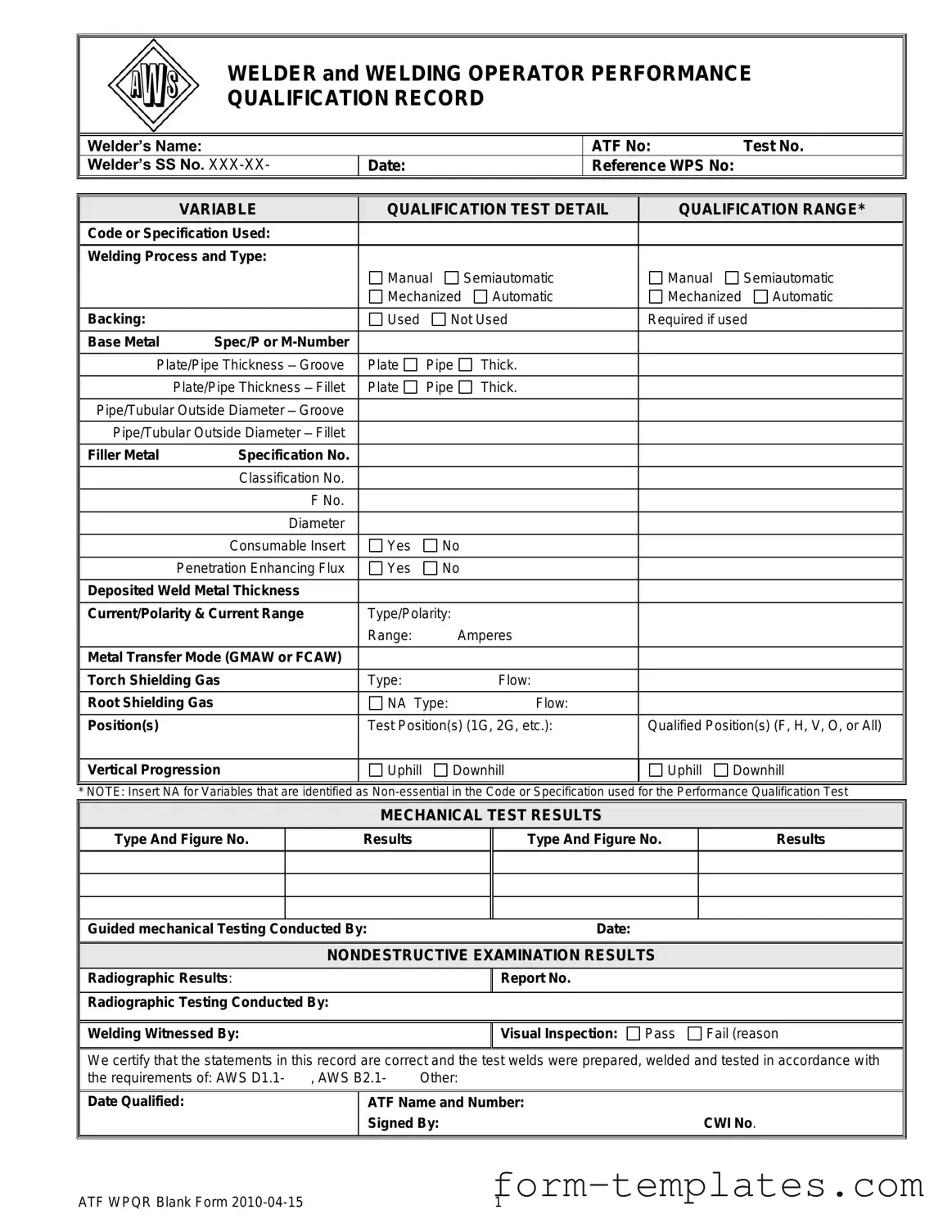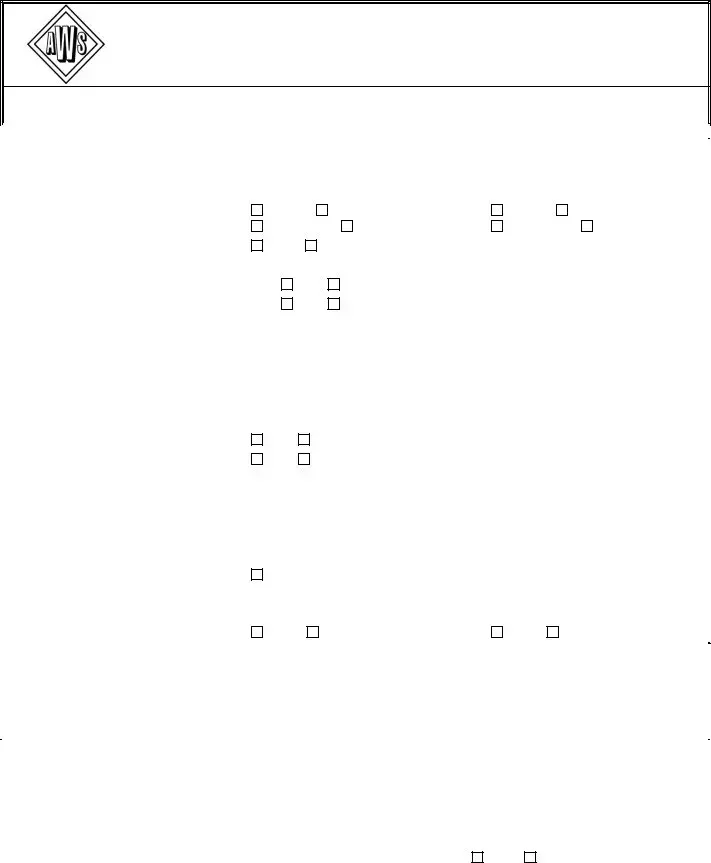The Welder Performance Qualification Record form serves as a formal documentation tool that verifies a welder's skills and qualifications. It records the specific tests a welder has completed and the results of those tests. This information is crucial for employers and regulatory bodies to ensure that the welder meets the required standards for safety and quality in welding operations.
This form must be completed by welders and welding operators who are seeking to demonstrate their proficiency in various welding processes. It is particularly important for those working in industries where compliance with specific codes and standards, such as AWS (American Welding Society), is mandatory. Employers may also require this documentation to ensure their workforce meets industry standards.
The form requires several key pieces of information, including:
-
Welder's name and identification numbers (such as ATF and Social Security numbers)
-
Date of the qualification test
-
Reference WPS (Welding Procedure Specification) number
-
Details about the welding process used, including type and position
-
Results of mechanical tests and non-destructive examinations
All of this information helps to create a comprehensive profile of the welder's capabilities.
What types of welding processes are covered?
The form accommodates various welding processes, including manual, semiautomatic, mechanized, and automatic methods. Specific details about the type of welding performed, such as GMAW (Gas Metal Arc Welding) or FCAW (Flux-Cored Arc Welding), are also documented. This allows for a clear understanding of the welder's expertise across different techniques.
What are the mechanical test results?
Mechanical test results refer to the evaluations conducted to assess the strength and integrity of the welds produced by the welder. These tests can include tensile tests, bend tests, and impact tests, among others. The results are recorded on the form, providing evidence of the welder's ability to produce welds that meet specified standards.
What does the non-destructive examination involve?
Non-destructive examination (NDE) is a critical part of the qualification process. It involves testing methods such as radiographic inspection to evaluate the quality of the welds without damaging them. The results of these examinations are documented on the form, indicating whether the welds passed or failed inspection. This process ensures that any defects are identified before the welds are put into service.
How long is the qualification valid?
The validity of the qualification can vary based on industry standards and specific employer requirements. Generally, qualifications may need to be renewed periodically, especially if there are changes in welding processes, materials, or codes. It is essential for welders to stay informed about the duration of their qualifications and any necessary re-testing.
The information on the Welder Performance Qualification Record form is certified by a qualified individual, typically a Certified Welding Inspector (CWI). This person verifies that the tests were conducted according to the applicable codes and standards. Their signature on the form adds credibility to the qualification record and assures employers of its authenticity.

